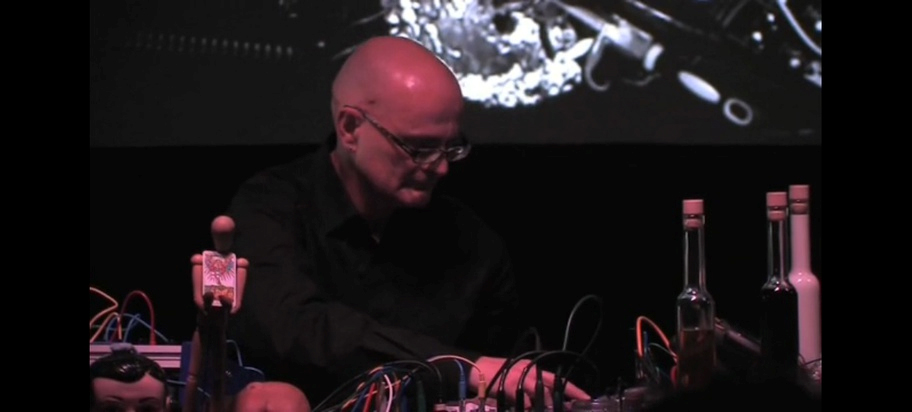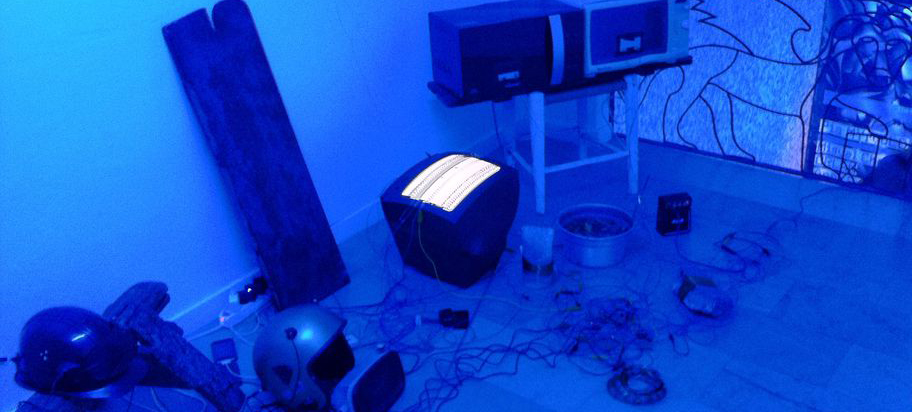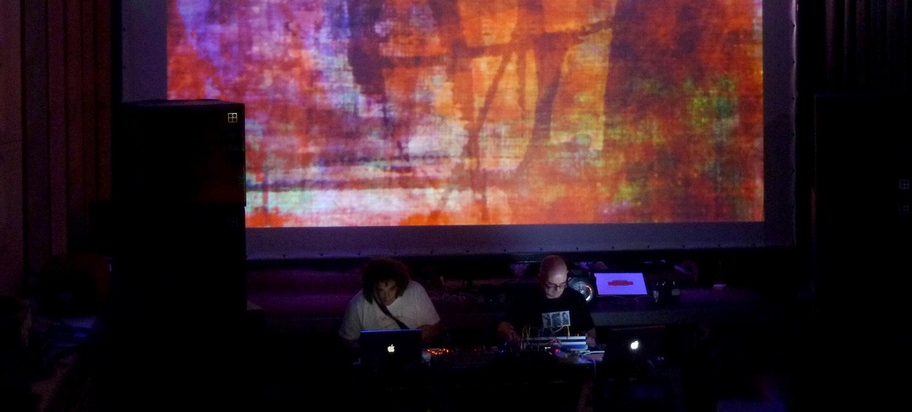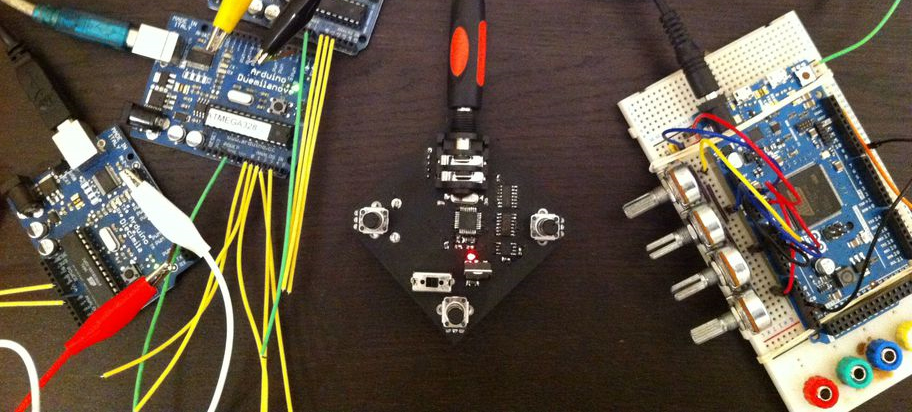John Bowers
John Bowers

John Bowers is Professor of Creative Digital Practice at Culture Lab. He leads the research there concerned with Digital Media and combines design-led explorations of digital technologies with sound art and intermedia performance in his own personal practice. Within the research environment of Fine Art and Culture Lab at Newcastle, his research will grow along five principal trajectories:
Developing art and design-led approaches to the exploration of digital technologies and novel interaction techniques
John is associated with a body of work exemplifying a practice-led, collaborative, studio-based approach to design work with digital media, making prototypes which embody exploratory principles for new technologies or which project ideas for the social practices which might emerge surrounding innovations. In extended field trials, volunteers use these artefacts, relatively unsupervised, for months or even years. Growing experience with these approaches has enabled John to begin to write summative and synthetic statements about design research which have already begun to influence researchers who design interactive systems (e.g. his work on ‘annotated portfolios’). This reflective concern for art and design-led creative practice will be deepened in future work to, in particular, link to broader theorizations of material culture, media archeology and critical theory. For example, a major examination of the theorizations of Michel Foucault in relation to the design of digital technologies is in press with MIT and expected in 2014.
Developing sound art and intermedia practices

John brings sound art and musical interests and associated technical skills to Fine Art. He is known for his playful approaches to the construction of what are sometimes called NIMEs (New Instruments for Musical Expression), looking for sonic potentiality in raw electronic materials, often creating assemblages of components which have a deliberately provisional and shanty-built character, which he calls ‘infra-instruments’. There are several ongoing projects exploring these ideas. His Victorian Synthesizer, an attempt to build a sound synthesizer with techniques and materials known to the Victorian, is highlighted in an influential textbook on making musical instruments. His Earth Synthesizer uses the earth itself as a battery and a source of sound and was exhibited at the 2013 British Science Festival. Carnal Resonance electrostimulates the body and picks up how sound is resonated through muscle tissue. John has begun to work with miniature computers (e.g. Arduino, Raspberry Pi) for sound and image generation. John is a very frequent performer both solo and in various ensembles, notably with Tonesucker whose 2012 release, Omnia Convivia Crastina, was listed as one of A Closer Listen’s albums of the year. He performs both in small venues and in larger institutions, touring in 2009-2011 with the Rambert Dance Company performing David Tudor’s music to Merce Cunningham’s Rainforest to about 20,000 people. He typically works with live digitally generated image, often responsive to performer gesture, and has a growing interest in what he calls Neo-Structural Cinema, a digital re-visiting of the concerns of structural film in the 1960s and 70s. John is beginning to work towards giving this multi-faceted practice a more focused exhibitable and performable form, something which will prominently occupy him in future work. This will build on The Thinning Veil, an hour long performance premiered at the SPILL Festival of Performance (2012) and reperformed at Buzzcut, Glasgow (2013).
Working with multiple publics
John works with a variety of communities, organizations and interest groups. He has new, growing collaborations in Newcastle with Tyne and Wear Archives and Museums, Tyneside Cinema, and Sage Gateshead. He is an Associate Artist with the Pacitti Company, a National Portfolio Organisation of Arts Council England who promote experimental performance work and, funded by the AHRC’s Creative Exchange, is developing work with them exploring the potentials for knowledge exchange between researchers, artists, museums and their publics. John also works with grassroots makers, hackers and DIY groups. He was a founder member of Dorkbot Anglia in 2010, a part of the international Dorkbot network of digital and electronic experimentalists. He has exhibited at Maker Fairs and related events prominent in DIY culture. He has a particular concern for working with open source communities and the arts festivals that these communities have spawned, most notably Piksel in Bergen where he has lectured, performed and run workshops (2011-2013) and ElectroPixel in Nantes (2011). The work of open source artistic communities is becoming more widely known and John was invited as part of the Piksel Remote Hacklab to create work onsite at a co-lateral event of the 2013 Venice Biennale. Future work will further this concern for open source technologies and artistic practices. Emerging projects involve UK funding proposals to examine how artists can work with open digital technologies to support community-based political activism.
Improvisation in the arts

John’s work is typically improvised and his 2003 monograph Improvising Machines is a commonly cited reference in studies of the improvisation of electronic music. His emerging work is returning to addressing improvisation and examining it in a deeper, comparative, cross-arts context. This has included events involving collaborations with dancers, performance artists and live writing. John is developing projects in collaboration with researchers at the International Centre for Music Studies at Newcastle concerned with networked improvisation where specifically configured computer networks are deployed to create internationally distributed performances. He has worked on creating inclusive performance settings which allow equal participation of mixed ability groups. For example, Power involved the mass-participation of electric guitarists and was commissioned as part of the East of England’s 2012 Cultural Olympiad. Deepening this, John is developing proposals with researchers at the International Centre for Music Studies to research the creation of sustainable grassroots improvisation communities.
Sensor technologies and digital fabrication

In particular working with the support of Creative Exchange and collaborating with PhD students Bettina Nissen and Timothy Shaw, John will be examining various artistic potentials for sensor technologies and digital fabrication. In his Atmospherical Clocks (2010-11), John took data from atmospherical sensors and used these to calibrate multiple clocks so as to explore possibilities for measuring time which were local, contingent, multiple and fluctuating. Troposphere is an emerging work with sound artist and soundscape composer Timothy Shaw to create multiple materializations of environmental data in the form of data-driven sonic sculptures. With Bettina Nissen, John is exploring the potential for making small assemblages using digital fabrication technologies to materialize the experience of visitors to exhibitions in the form of personalized souvenirs. Both projects are part of a general concern to explore digital technologies for extending our perception and appreciation of artefacts and ecologies, to create a trajectory, as some theorizations of material culture would have it, from object to thing.
